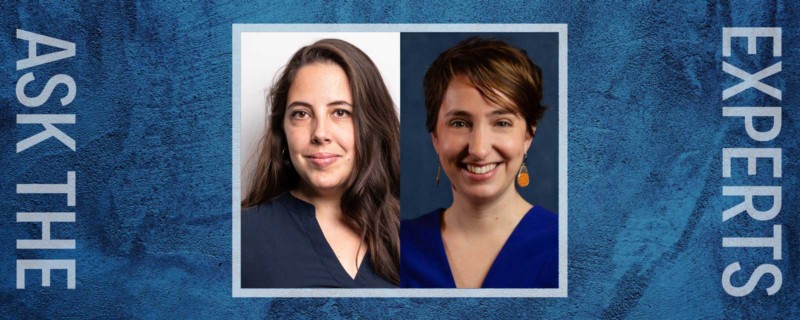
Ask the Expert – Transfection Best Practices for AAV Gene Therapy
The majority of vectors used for gene therapies are currently generated using transient production systems, primarily due to convenience and speed of process. Manufacturing viral vectors via transfection is flexible and efficient and does not require time consuming development of stable cell lines. However, transfection based methods do require optimization to ensure the highest productivity, consistency between batches, and scalability.
Key areas for improvement of transfection in AAV production include:
- Identifying and addressing common bottlenecks to scalable transfections.
- Streamlining the scale-up and transfection process.
- Designing and standardizing the process for consistent, reproducible results.
- Transferring an optimized process at small scale into larger scale production vessels.
- Maintaining actively dividing cells and cell culture health for efficient transfections.
Since the need for optimized transfection is so critical to successful AAV production, we felt it was important to provide the opportunity to ask questions about best practices in these areas. We have invited Ann Rossi Bilodeau, Ph.D., Senior Bioprocess Applications Scientist, Corning Life Sciences and Cassie-Marie Peigné, PhD, Scientific Support Specialist, Polyplus-transfection to provide answers to reader questions on transfection for AAV production in gene therapy applications.
Meet the Experts
 Dr. Ann Rossi Bilodeau graduated from the University of Rochester School of Medicine and Dentistry with a Ph.D. in Pharmacology and received postdoctoral training at the University of Chicago. Ann began her career with Corning Life Sciences as the Applications Lab Manager where she utilized her strong academic and industry research experience to direct the activities of the Applications Laboratory. Currently, Dr. Rossi Bilodeau is the Senior Bioprocess Applications Scientist, functioning as the technical lead for generating applications in support of Corning Life Sciences’ Bioprocess and Cell/Gene Therapy portfolios including Corning® CellCube® and Corning HYPERStack® platforms.
Dr. Ann Rossi Bilodeau graduated from the University of Rochester School of Medicine and Dentistry with a Ph.D. in Pharmacology and received postdoctoral training at the University of Chicago. Ann began her career with Corning Life Sciences as the Applications Lab Manager where she utilized her strong academic and industry research experience to direct the activities of the Applications Laboratory. Currently, Dr. Rossi Bilodeau is the Senior Bioprocess Applications Scientist, functioning as the technical lead for generating applications in support of Corning Life Sciences’ Bioprocess and Cell/Gene Therapy portfolios including Corning® CellCube® and Corning HYPERStack® platforms.
 Cassie-Marie Peigné is a Scientific Support Specialist at Polyplus-transfection® SA, the leading biotechnology company that supports Gene and Cell therapy, biologics manufacturing and life science research with innovative nucleic acid transfection solutions. Cassie completed her PhD in Immunology at the University of Nantes, followed by a postdoctoral position in Infectious Diseases at the Okinawa Institute of Science and Technology, before joining Polyplus.
Cassie-Marie Peigné is a Scientific Support Specialist at Polyplus-transfection® SA, the leading biotechnology company that supports Gene and Cell therapy, biologics manufacturing and life science research with innovative nucleic acid transfection solutions. Cassie completed her PhD in Immunology at the University of Nantes, followed by a postdoctoral position in Infectious Diseases at the Okinawa Institute of Science and Technology, before joining Polyplus.
Question 1
How long does it take to see expression of AAV in HEK cells post transfection?
Transient expression of AAVs can be observed in HEK-293 cells as early as 24 hours post-transfection when using PolyPlus transfection reagents dedicated to viral vector production. The standard harvesting time is generally of 48-72 hours post-transfection, irrespective of whether you are using adherent or suspension adapted HEK-293 cells. Depending on the serotype, and on the gene of interest that the AAV vector carries, it can be worth harvesting at a later time point, up to 10 days post-transfection or more. We would recommend harvesting at different time points to evaluate best productivity vs. cost-effectiveness of the process.
Question 2
What is the best way to reduce the use of plasmid and/or keep transfection costs down?
Indeed plasmid DNA is usually what brings up the cost of the transfection step. Less at bench scale, but it quickly becomes expensive at larger scale, and even more so when you need to start producing using GMP grade raw materials. To bring down the amount of plasmid used, the strategy is to primarily rely on a transfection reagent that can allow a significant reduction in plasmid DNA. Typically with PolyPlus transfection reagents, you can reduce the amount of DNA by at least 20% compared to using alternative methods. In a second step, optimization of transfection parameters, DNA/reagent ratio, VCD at transfection and complexation time can further improve productivity and therefore contribute to further decrease overall cost per AAV production batch. To take it a step further, if you have the flexibility in setting up your production system, the HEK-293 cell lineage, the production medium are parameters worth assessing to develop a process that will be scalable to meet your AAV manufacturing needs.
Question 3
I’m looking for the easiest way to determine the right AAV serotype for my system. I’ve narrowed it down using literature searches but is there an easy way to test a few serotypes.
A deep dive into the literature is one of the best way to narrow down the list of potential AAV serotypes for different systems. Test the few top candidates, first on a small scale with some type of reporter construct for an easily identifiable phenotype to check for the efficiency of transduction. There are commercially available testing kits that contain pre-made viral stocks of multiple serotypes for GFP expression (e.g., Vector Biolabs’ AAV Serotypes Testing Kit AAV, GeneCopoeia’s AAVPrime™ Adeno-associated virus (AAV) Serotype Testing Kit). Finally, choose the one or two of the best from those tests and move onto testing with your gene-of-interest on a small scale.
Question 4
Do you recommend sequencing plasmid before using?
Yes, we recommend sequencing plasmids before use. Confirming the sequence and identify of plasmids could ultimately save time and resources spent troubleshooting a transfection process that might not ever yield infectious viral particles.
Question 5
Troubleshooting questions – what is the packaging limit for AAV and what happens if you get close to the limit?
The size limit of AAV vectors is approximately 5 kb. Some serotypes may accept larger genes, but most literature cites success in packaging approximately 4.4 to 4.7 kb. Several publications have investigated the effects of exceeding the AAV payload (e.g., Grieger and Samulski in J Virol 2005, doi: 10.1128/JVI.79.15.9933-9944.2005 and Wu et al. in Mol Ther 2010, doi: 10.1038/mt.2009.255).
In general, approaching the limit will affect the packaging efficiency: the closer to the size limit, the lower the titer. However, there are many published reports describing alternative strategies for packaging larger transgenes, such as split AAV vectors and fragment assembly.
Question 6
In your experience, do you see a significant difference in AAV yield based on confluence and what do you recommend for confluence before transfection?
Cell confluence is a critical parameter for several reasons. It has a direct impact on transfection efficiency, and on the reproducibility and robustness of the process. It is important to refer to the transfection reagent protocol, as the optimal confluence may differ when comparing several transfection reagents.
For AAV production in adherent HEK-293 cells, we recommend using PEIpro transfection reagent. When using this reagent a confluency of 60-80% at the time of transfection is optimal because cells are still in their exponential growth phase. To improve robustness of the process, think in terms of VCD at the time of transfection and amount of DNA per million of cells to ensure optimal confluency.
Question 7
I’m looking to speed my AAV production and was wondering if you have tips or do you recommend a production kit?
Production kits usually are expected to contain cells, medium and a transfection reagent. These are well appreciated systems for bench scale production. However, using a kit poses two main concerns: 1) the lack of flexibility, and 2) the unsuitability for large scale manufacturing.
Whether at small or large scale, it is an advantage to be able to optimize production depending on the AAV serotype needed with the choice of the cells, the production medium and the transfection reagent. For a production process to be scalable, it needs to be cost-effective, and usually complete production kits are not suited for large scale production and hence do not bring the benefit of cost reduction. It’s important to have a screening step at small scale to determine the best combination of tools (cells, media and transfection reagents) for maximum production of full particles. An efficient way to ensure you are set up for success is to contact scientific support teams from the suppliers you are working with to ensure you select optimal tools and have a streamlined process. Both Corning and PolyPlus have Scientific Support Teams available to answer questions.
Question 8
We are seeing inconsistent yields batch to batch during transfection in a bioreactor. Do you have some troubleshooting tips?
Batch to batch variation can be addressed by optimizing the transfection step in order to have a robust production process. Parameters that are critical for the transfection step are the transfection reagent used and whether the transfection reagent can form every time the right sized complexes to effectively deliver the DNA cargo into cells. The preparation of the transfection mix is therefore key to achieve the right sized complexes. Key parameters to consider are the amount of DNA per million of cells for transfection, the DNA to reagent ratio, the mixing strategy and length and the stability of the complexes. With Polyplus transfection reagents, these parameters have already been optimized to simplify your task. They can be further refined or adapted to your set up by contacting the Polyplus Scientific Support team. Lastly, it is important to make sure that the VCD at transfection remains the same from one batch to another.
Question 9
We are looking for a good scale down model for our rAAV production, but have had trouble finding one that is designed for AAV production.
A good scale down model should mimic the AAV production process at the final production scale, whether the final scale is intermediate or large, adherent or suspension. Though it may not be possible to miniaturize every aspect of upstream production, it is especially important for the model to achieve comparable cell expansion parameters and utilize a transfection process that is scalable. Accordingly, choosing the right vessels for cell scale-up/out and the appropriate transfection reagents are key to easing the transition from process development to manufacturing. As an example for adherent cultures: Corning® HYPERFlask® or Corning HYPERStack® 12 layer vessels can serve as the process development vessel for a final scaled-out production in HYPERStack-36 vessels; Corning CellSTACK® 1 layer vessel or CellSTACK 2 Culture Chambers model larger scale cultures in CellSTACK-10 or CellSTACK-40 Chambers; Corning CellCube® 10 Layer or CellCube-25 Layer Modules directly scale to CellCube-100 Layer Modules.
For suspension cultures, many bioreactor models are available in a wide-range of volumes for small through large scale cell culture. Once the cell culture platform is established, develop the transfection process with reagents that are specifically optimized for direct scalability.
Polyplus Transfections’ PEIpro and FectoVIR-AAV are designed for robust and reproducible transfections in adherent and suspension cells, respectively, to achieve high titer AAV yields from small scale process development through large scale clinical-grade manufacturing.
Question 10
Two questions, what do you consider typical titer for AAV production and what can you do to increase it?
Typically, AAV production titers are around 10e11 to 10e12 in VG/ml and 10e8 to 10e9 TU/ml. To put these numbers into perspective, it’s important to keep in mind that two AAV serotypes will most likely not give the same yield, even when using the same production process. AAV production yields vary depending on the serotype and the gene of interest. The best way to increase production of a given AAV is to go over critical parameters that directly have an impact on the yield: plasmid DNA, transfection reagent, cells and medium.
- Plasmid DNA- using a DOE approach, transgene/packaging/helper plasmid ratios, as well as the final DNA amount per million cells can be refined to improve yield.
- Transfection reagent – comparing transfection reagents to reach highest production yield, and further refining the plasmid DNA/ transfection reagent ratio to improve delivery efficiency and gene expression.
- Cells and medium-choosing the best cell culture system for highest production yield for the scale that you aim for, adherent or suspension-based.
Question 11
We had a problem with contamination of our plasmid. What kind of screening or removal do you recommend for endotoxin?
There are two basic options for low endotoxin plasmid preparations: perform your own preparations and endotoxin testing or contract the preparations to an outside company. The decision which option is best comes down to weighing resources versus efficiency and is highly dependent upon your available lab resources, timeline, scale and final application. For in-house preparation, utilize a commercially available plasmid prep kit that specifies low endotoxin or endotoxin-free plasmid preparation. Plasmid preparations can then be tested with a commercially available LAL (limulus amebocyte lysate) assay kit. Alternatively, send your plasmid(s) to a company with plasmid production services, such as Aldevron that offers plasmid manufacturing for both research grade, GMP-source and GMP plasmids.
Question 12
As I am scaling up our adherent process, I am not seeing titers scale at the same ratio as in small scale. What can I do to improve this?
First and foremost, think in terms of viable cell density rather than absolute surface area when optimizing a transfection process. In other words, calculate the amount of DNA and transfection reagent per million of cells. Be sure to characterize how the cultures grow (e.g., cell yield, doubling time) in the scaled-up vessel where you are conducting the transfection for an accurate assessment of cell density on the day of transfection. If possible, seed a control vessel with the same growth kinetics to harvest on the day of transfection to determine cell density. Normalizing for cell growth in this way can account for inconsistent cell growth between different sizes and/or types of cell culture vessels and ensures reproducible transfections upon scaling-up. It is equally important that the transfection reagents are designed for scalable transfections, like those from Polyplus Transfections, that enable robust transfection complex formation from small scale-process development through intermediate to large scale production.
Question 13
There is a problem with plasmid access and it is creating a real bottleneck in our process. Do you have any suggestions?
The best way to alleviate the bottleneck is to align with a supplier that is capable of manufacturing large-scale GMP-source or GMP plasmids.
Question 14
We are weighing outsourcing vs. producing our rAAV in house. Could you talk about thoughts for each.
There are several factors to consider when weighing whether to outsource or produce rAAV in-house—almost too many to expand on in detail in this forum. Importantly, all steps from plasmid generation to upstream cell culture and transfection through downstream purification and analytics must be factored into the decision. Some of the major factors to consider include: project timelines, the volume/titer needed versus your capacity to produce (i.e., what scale can your facility handle?), short- or long-term needs, research-grade versus GMP, cost in both materials and labor, application for the viral particles, and available expertise to design and troubleshoot the production and analytics. In the end, it comes down to a question of whether it is better to relinquish control of the process for the sake of efficiency or it is necessary and worth the investment of time, money, and resources for your specific application to produce in-house. For one perspective, the following article discusses the rationale of one company behind establishing in-house manufacturing: Markarian J. “Finding Success in AAV Manufacturing”. BioPharm International 2021;34(3):34–37.
Question 15
What are the biggest differences between PEI and other methods for AAV transfection? Are there different media requirements?
There are several transfection methods to produce AAVs. You may have come across more frequently polymer-based transfection reagents such as PEI, lipid-based and Calcium phosphate. What makes PEI and in general polymer-based transfection reagents more suitable to produce AAVs compared to lipid and calcium-based is the productivity and cost-effectiveness. There are several PEI that are commercially available, but only one PEI that is optimized for viral vector production: PEIpro®. Compared to calcium phosphate, PEI-based transfection can decrease down by 10 times DNA amount and can be used to transfect cells grown in the presence of or in the absence of serum. It brings versatility and scalability by being the go-to transfection reagent compatible with most production platforms, adherent or suspension for small to large scale production capacities. Compared to lipid-based transfection reagent, PEI-based transfection is designed for large scale production: it is cost-effective by substantially bringing down the cost per production batch and is compatible with most production medium and complexation media to adapt to each manufacturer’s process. Last but not least, the availability of the transfection reagent at higher quality grade, ideally GMP Pharma grade, to move on to producing clinical batches is necessary, and must be taken into account in the choice of a reagent as early as possible to guarantee efficient transition from PD to manufacturing.